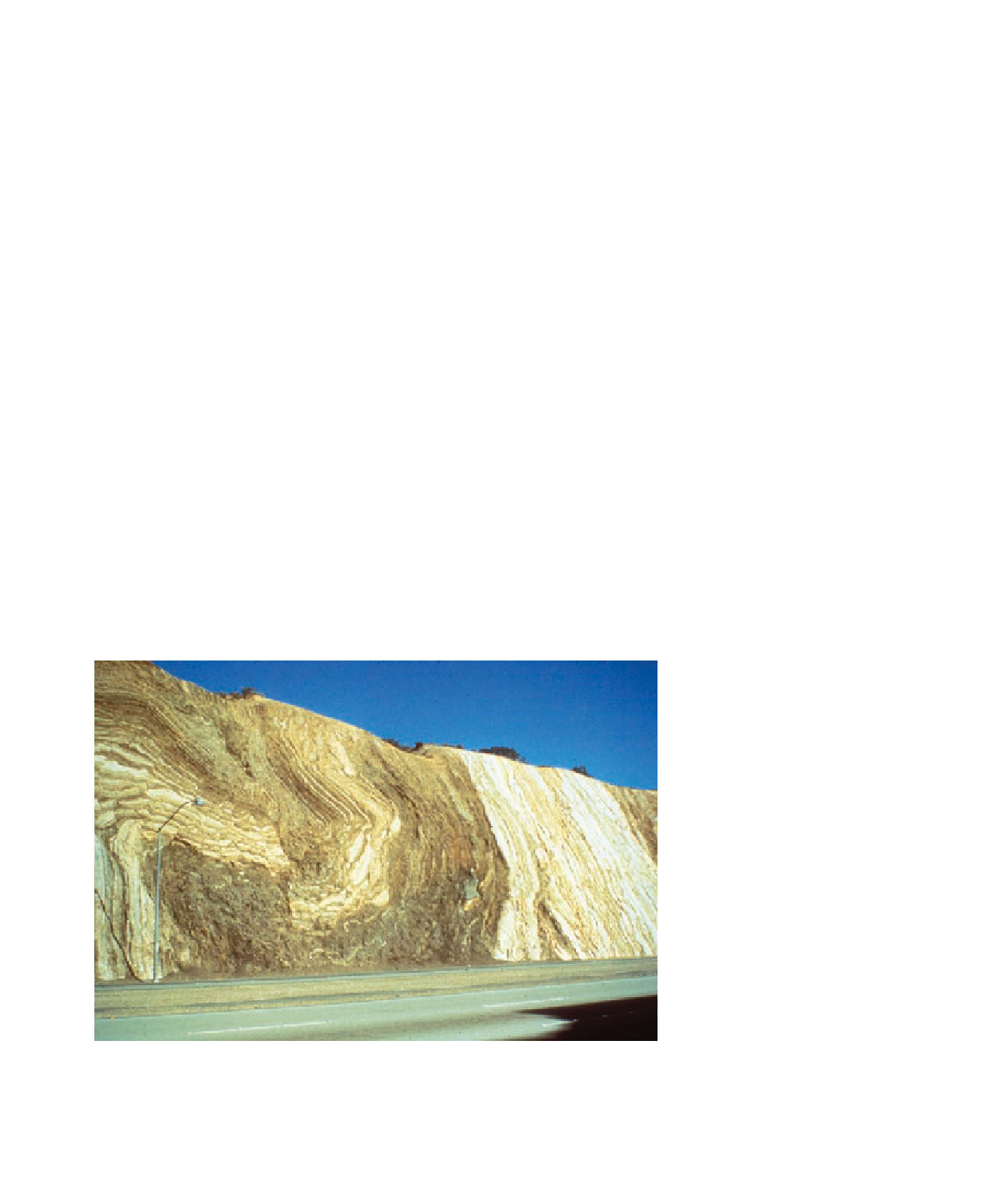Geology Reference
In-Depth Information
“Solid as a rock” implies permanence and durability, but you
know from earlier chapters that physical and chemical pro-
cesses disaggregate and decompose rocks, and rocks behave
very differently at great depth than they do at or near Earth's
surface. Indeed, under the tremendous pressures and high
temperature at several kilometers below the surface, rock lay-
ers actually crumple or fold, yet remain solid, and at shal-
lower depths, they yield by fracturing or a combination of
folding and fracturing. In either case, dynamic forces within
Earth cause
deformation
, a general term encompassing all
changes in the shape or volume of rocks (see the chapter
opening photograph and
The past and continuing evolution of continents involves
not only deformation at continental margins, but also ad-
ditions of new material to existing continents, a phenom-
enon known as
continental accretion
(see Chapter 19). North
America, for instance, has not always had its present shape
and area. Indeed, it began evolving during the Archean Eon
(4.6-2.5 billion years ago) as new material was added to the
continent at deformation belts along its margins.
Much of this chapter is devoted to a review of
geologic
structures
, such as folded and fractured rock layers resulting
from deformation, their descriptive terminology, and the
forces responsible for them. There are several practical rea-
sons to study deformation and mountain building. For one
thing, crumpled and fractured rock layers provide a record
of the kinds and intensities of forces that operated during the
past. Thus, interpretations of these structures allow us to sat-
isfy our curiosity about Earth history, and, in addition, such
studies are essential in engineering endeavors such as choos-
ing sites for dams, bridges, and nuclear power plants, espe-
cially if they are in areas of ongoing deformation. Also, many
aspects of mining and exploration for petroleum and natural
gas rely on correctly identifying geologic structures.
Figure 10.1).
The action of dynamic forces within Earth is obvious
from ongoing seismic activity, volcanism, plate movements,
and the continuing evolution of mountains in South America,
Asia, and elsewhere. In short, Earth is an active planet with a
variety of processes driven by internal heat, particularly plate
movements; most of Earth's seismic activity, volcanism, and
rock deformation take place at divergent, convergent, and
transform plate boundaries.
The origin of Earth's truly large mountain ranges on
the continents involves tremendous deformation, usually
accompanied by emplacement of plutons, volcanism,
and metamorphism, at convergent plate boundaries. The
Appalachians of North America, the Alps in Europe, the
Himalayas of Asia, and the Andes in South America all owe
their existence to deformation at convergent plate boun-
daries. And, in some cases, this activity continues even now.
Thus, deformation and mountain building are closely related
topics and accordingly we consider both in this chapter.
◗
HOW DOES IT OCCUR?
We defined
deformation
as a general term referring to
changes in the shape or volume (or both) of rocks; that is,
rocks may be crumpled into folds or fractured as a result of
stress
, which results from force applied to a given area of
rock. If the intensity of the stress is greater than the rock's
internal strength, the rock un-
dergoes
strain
, which is simply
deformation caused by stress.
The terminology is a little con-
fusing at fi rst, but keep in mind
that
deformation
and
strain
are
synonyms, and stress is the
force that causes deformation
or strain. The following discus-
sion and
Figure 10.2 will help
clarify the meaning of stress and
the distinction between stress
and strain.
◗
Remember that stress is the force
applied to a given area of rock,
usually expressed in kilograms
per square centimeter (kg/cm
2
).
For example, the stress, or force,
exerted by a person walking on
an ice-covered pond is a func-
tion of the person's weight and
the area beneath her or his feet.
◗
Figure 10.1
Deformation Many rocks show the effect of deformation. These rocks have been
deformed by folding and fracturing. Notice the light pole for scale. The nearly vertical fracture where
light-colored rocks were displaced is a fault, a fracture along which rocks on opposite sides of the
fracture have moved parallel with the fracture surface.

Search WWH ::

Custom Search